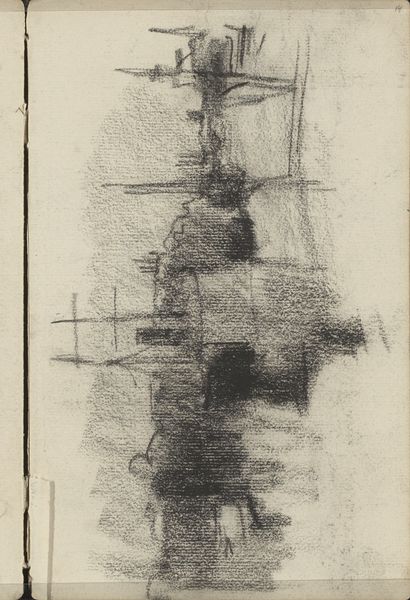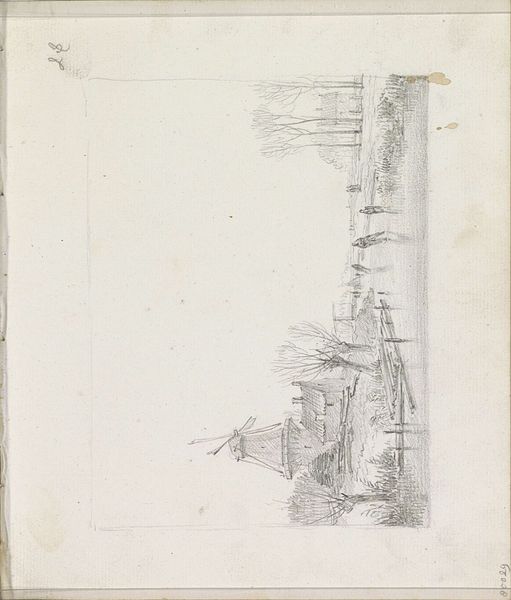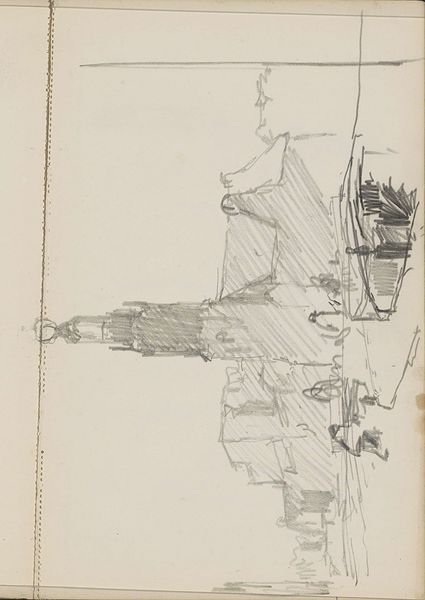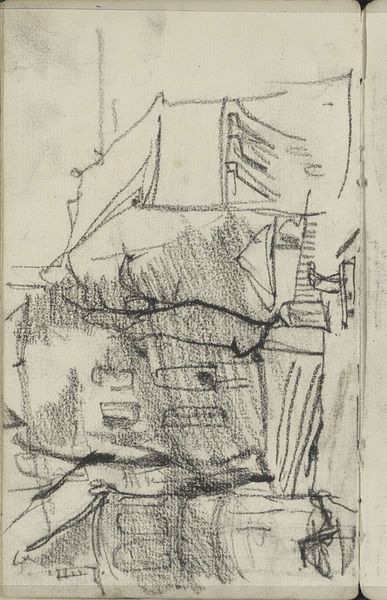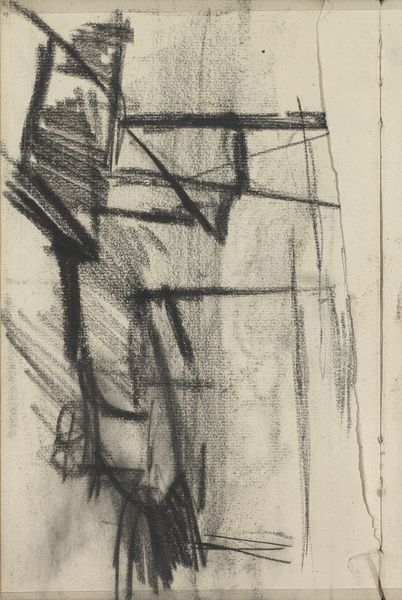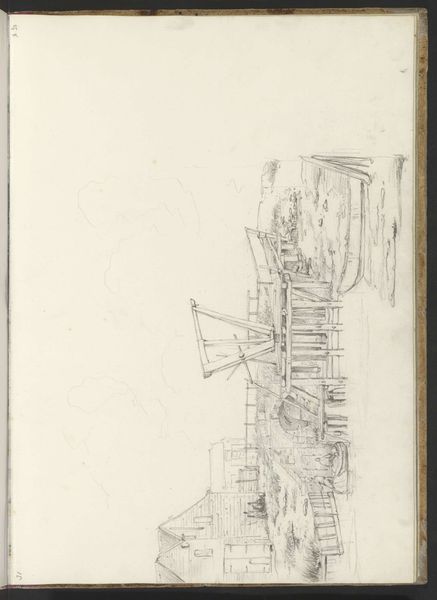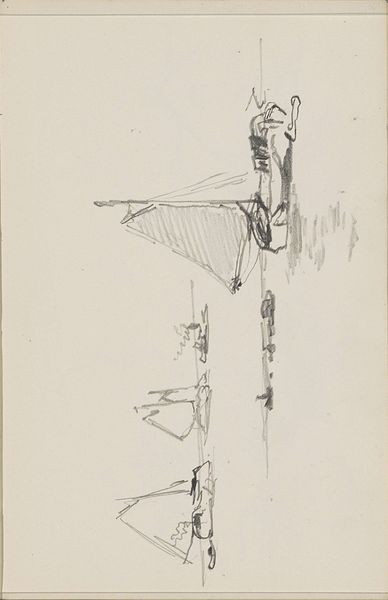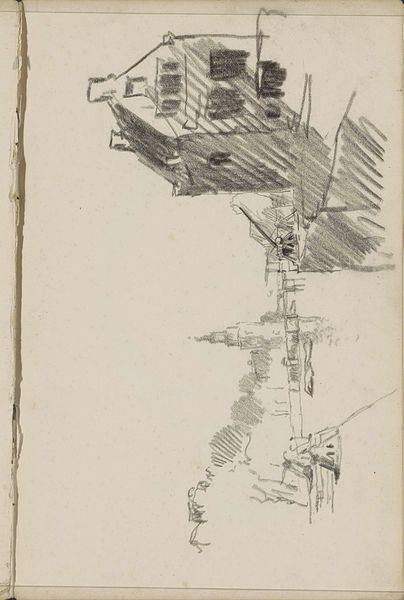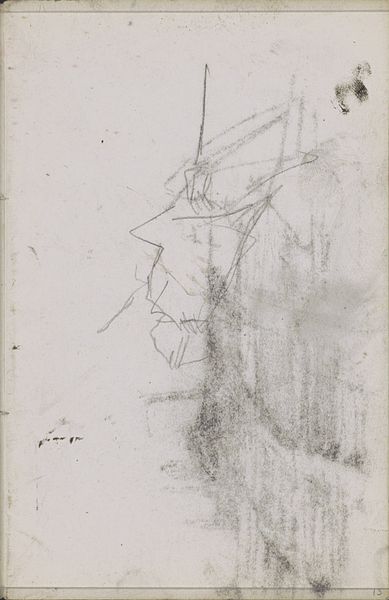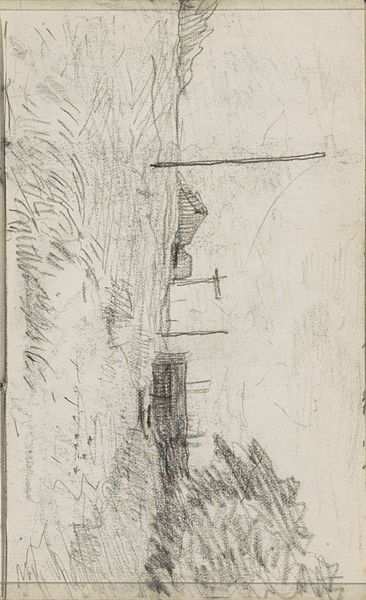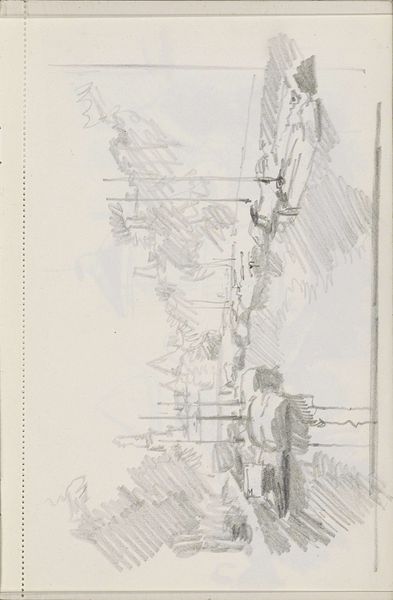
Copyright: Rijks Museum: Open Domain
Editor: This is "Gebouw op een kade," or "Building on a Quay," a graphite drawing by George Hendrik Breitner, dating from around 1880 to 1906. It feels incredibly immediate, like a fleeting impression captured quickly. What historical context might illuminate this piece? Curator: That immediacy is key. Breitner was deeply invested in capturing the pulse of Amsterdam, particularly its working class and urban spaces. Think about the late 19th century: rapid industrialization, growing cities, and a changing social landscape. How might this drawing reflect those realities? Editor: It almost feels like a sketch for a larger work, lacking the polish I might expect. The starkness could suggest the roughness of industrial life. Curator: Precisely! The sketch-like quality, the focus on utilitarian architecture rather than grand monuments, all point to a shift in artistic interest. Artists began turning their attention to the everyday, to the unglamorous aspects of modern life. Consider, also, who had access to art during this period. How did social class influence the representation of subject matter? Editor: So, Breitner's choice of subject matter, a working building instead of something more traditionally "artistic", could be seen as a deliberate social commentary? Curator: It certainly challenged existing hierarchies. He wasn’t just depicting a building; he was implicitly acknowledging the lives and labor associated with it. Were art consumers interested in art reflecting all aspects of society? How were art institutions shaped by the elite? Editor: That reframes my understanding entirely. It’s not just a quick sketch, it’s a conscious decision to depict a specific reality, making a statement about the art world. Curator: Exactly. And the rapid, expressive lines convey the energy of a changing city, a visual parallel to social upheaval. What art is shown, who makes that art, and what are the forces deciding that art can be revealing. Editor: I hadn't considered how a simple drawing could hold such complex layers of social and political meaning. Curator: The politics of imagery is ever present. Considering those implications transforms the artwork from simple sketch to cultural touchstone. Editor: It makes you wonder about the buildings he *didn't* draw.
Comments
No comments
Be the first to comment and join the conversation on the ultimate creative platform.
